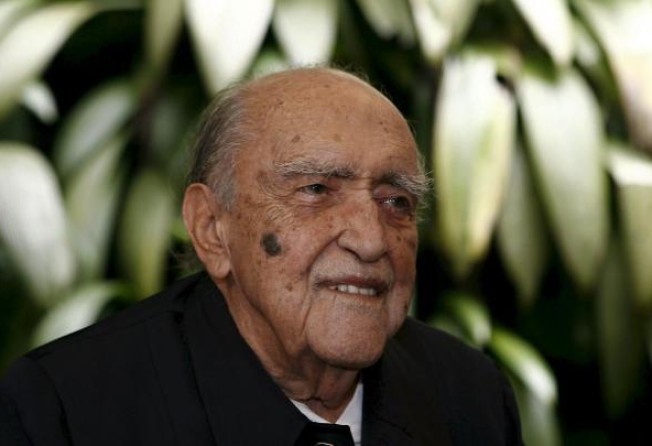
Iconic Brazilian architect Oscar Niemeyer dies at age of 104
Oscar Niemeyer, the committed communist who designed Brazil's capital and the UN headquarters, worked until the end of his life

Oscar Niemeyer, a towering figure of modern architecture who designed much of Brazil's futuristic capital, Brasilia, has died at the age of 104.

Niemeyer created buildings as diverse as the Serpentine Gallery in Hyde Park, London; the Penang State Mosque in Malaysia; and the headquarters of the French Communist Party in Paris. The latter building was designed during a period of exile in France, where the architect fled in the 1960s when a military dictatorship seized power in Brazil.
"There are too many injustices. But commitment to the Communist Party provides hope, solidarity, and the realisation that it is possible to struggle together for a better world," he told the French communist daily L'Humanite in 2006.
A pioneer in the use of reinforced concrete to produce soaring, curvaceous forms, Niemeyer designed 600 works around the world. They can be found in countries as far-flung as Algeria, Italy, Israel, the United States and Cuba, whose long-time leader Fidel Castro was one of his personal friends.
In the 1940s, he worked on the headquarters in New York of the recently created United Nations, an initiative that symbolised hopes for a new era of peace after the carnage of the second world war.
"Architecture is done by governments for the rich," Niemeyer once said. "Poor people don't get to take part, but they can be brought to a halt in front of a building which is so different that it sparks a moment of surprise and emotion."
Commitment to his politics was a key factor in Niemeyer's life. Founded in March 1922 and based on Marxism-Leninism, the PCB long operated underground until 1945, the year Niemeyer became a member.
The party went back underground during the military dictatorship - which lasted more than two decades, from 1964 to 1985 - when many Brazilian intellectuals, including Niemeyer, were forced into exile.
The Brazilian icon, who won architecture's top award, the Pritzker Prize, in 1988, started his career in the 1930s and went on working well into the 21st century, even after turning 100.
"I am not attracted by the angles or the hard and inflexible straight lines created by man," he once told the Spanish newspaper ABC. "What attracts me is the free and sensual curve, the curve which I find in the mountains of my country, in the flow of its rivers, in the waves of the ocean, in the body of a woman."
Niemeyer was born on December 15, 1907, in Rio de Janeiro into a middle-class family of German, Portuguese and Arab ancestry. He studied at the city's Fine Arts Academy, becoming an engineer-architect in 1936. One of his first jobs was on the Brazilian pavilion at the World Fair of 1939 in New York.
In 1928, he married Annita Baldo, with whom he had one daughter. The marriage lasted 76 years until Annita's death in late 2004. His only daughter, Anna Maria Niemeyer, died in 2009 at the age of 82.
